– The Birds, The Bees, and The Bovines –
– Preparing for New Life at Elm Hollow –
– Southeast Highland Show and Sale –
– The Virtual Highland Cattle Show 2023 –
Here at Elm Hollow Farm we aim for calving between late October and late February. This year we may try to narrow that window by a few weeks by waiting until Valentine’s day to let romance begin blooming. That way our 2024 fall calves will be arriving closer to Thanksgiving.
MINI-LESSON: The Birds, The Bees, and The Bovines
I have to laugh every time I think about the young visitor who asked me all about the breeding of our Highlands. When I explained the difference in terminology of heifer, a female that has not had a calf, and a cow, a female that has given birth to a calf, she said, “Oh, now I get why Granny calls me a little heifer! I guess my mom’s a cow.”
Actually though, the timing of cycling and gestation for cattle is quite close to that humans, so it makes predicting dates of birth much easier for those of us who paid attention in health class.
Just in case you didn’t pay attention, that means that a cow has fertility cycles and is only capable of conception during a few hours of that cycle. Cattle cycles vary from breed to breed and even from cow to cow within a breed. In general, the accepted normal range for a cow to cycle is every 18-28 days. This might even vary for a cow based on factors such as weather, available feed, body condition, and the presence of an attractive partner.
Gestation seems to be a little more standard. The accepted average is 283 days or about nine months. Factors that might influence that average time are the breed of the cow, the sex of the calf, and stressors such as weather, availability of feed, and changes in the environment. It is common for gestation to range from 279-292 days. That time for 2023 is right around the corner here at Elm Hollow Farm!
Fortunately for the cows, hard labor usually lasts less than two hours. If it goes longer, a vet might need to intervene. Highlands are usually heartier than most other breeds and, because they tend to have smaller calves, there are fewer complications.
I happened to be in the pasture when Isabel’s water broke and by the time I raced to the house for the camera and returned to video the birth, Keegan had already made his appearance. Although Isabel was a heifer, she knew just what to do and was already urging her boy to stand and get to nursing.
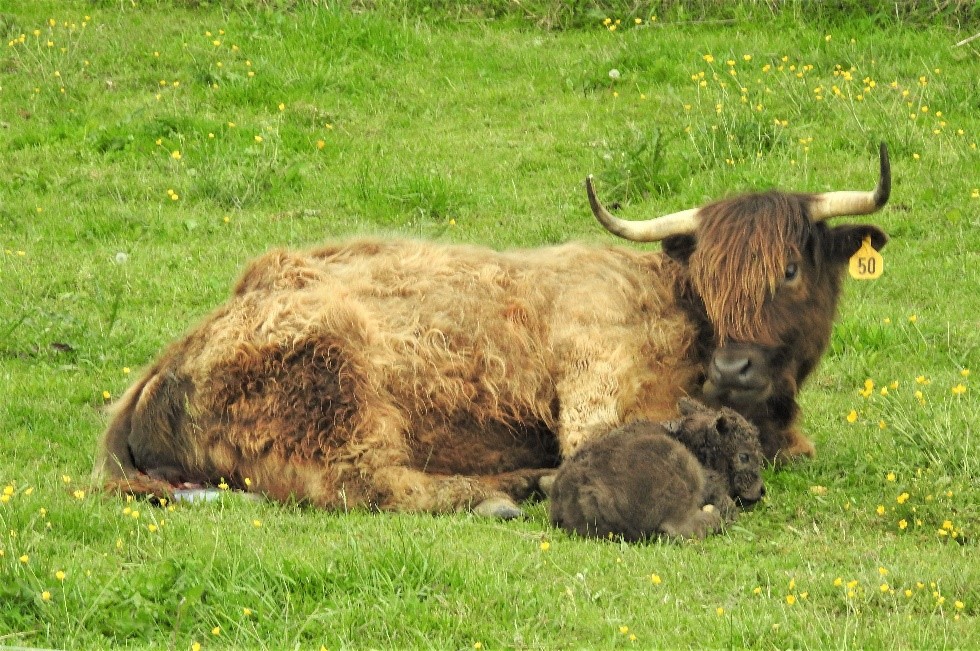
Those who are trying to increase the size of Highlands to compete in a beef market dominated by Angus may have larger calves, which can cause complications. The reality is that calving season can bring heartaches along with the joy of newborn calves.
We try our best to ease the stress on our mamas to be. Many breeders prefer to confine their cows near their due date and monitor them closely in a barn. While for some breeds, that may be the best way to ensure a safe delivery, we find that our girls become agitated when confined and are much more successful when they go off from the main herd to a quiet spot in the pasture to give birth. We have no trouble checking on the calf, treating the umbilical cord, and giving an oral vaccine to prevent scours. With a few exceptions, our mamas trust us to take care of their babies while they enjoy a snack.

They often take another cow with them who seems to act as a birthing coach. The attending cow is usually a pasture mate that is often seen relaxing near the pregnant cow. A heifer might choose a mature cow to go along with her. Heifers often do not know what to expect. We’ve watched mature cows appear to teach the new mothers how to clean the calf and even encourage a newborn calf to nurse. Consider this: If someone buys a heifer calf and raises it, even with another heifer calf, without the benefit of a herd containing mature cows giving birth, when those heifers are bred, they will not have any experience with calving. These inexperienced heifers may need humans to coach them through the process of successful calf raising.
This can be a long and complicated process, but is well worth the effort. I often tell the story of Darcy and her first calf, Heather. Darcy was not raised without the benefit of a herd, but she’s always been a bit independent. She did not take a mature cow with her when she went into labor with Heather and she did not like the pain of delivering a calf. When Heather was born, Darcy was already put out with this little creature and when that unsteady newborn tried to latch on to her sore and swollen udder, that was the limit of her tolerance. She kicked and shoved and wouldn’t let Heather near. This is not a rare reaction of a heifer to its first born.
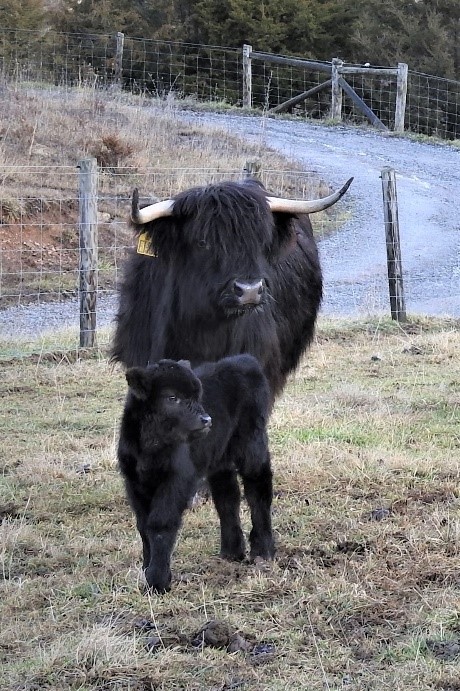
In the case of Darcy and Heather, it was evident that without our intervention, Heather didn’t have a chance. Our policy at Elm Hollow is to do absolutely everything we can to avoid bottle feeding a calf for more than a day or two, so the work began. Darcy had to be restrained in a headgate and her back legs tied to keep her from kicking at little Heather. We were sure that after a day or two things would calm down and the pair would bond. For the next three weeks, although they would stay close together in the pasture, when Heather attempted to nurse, she was rebuffed. We continued to restrain Darcy three or four times a day so Heather could get nourishment. One day, I arrived at the barn to discover Darcy standing with her head stuck into the open headgate and Heather nursing greedily at her side. Clever Darcy knew that I used grain to lure her into the headgate and if she pretended to refuse to nurse her babe, she was rewarded. I guess the swollen udder finally needed relief that day.
Heather is now a grown-up lady and Braxton appreciated her beauty in the pasture this winter. We’ll know in just a few short weeks if Heather will do a better job of mothering than Darcy did or if Darcy shared the secret to extra grain.

Although calves are usually up, walking and nursing within an hour or so of birth, it is often two or three days before the cow will take her newborn back and introduce it to the rest of the herd. This cow sensed danger when it heard coyotes howling as the sun began to set and chose to take her baby back to the main herd even though it was only a few hours old.
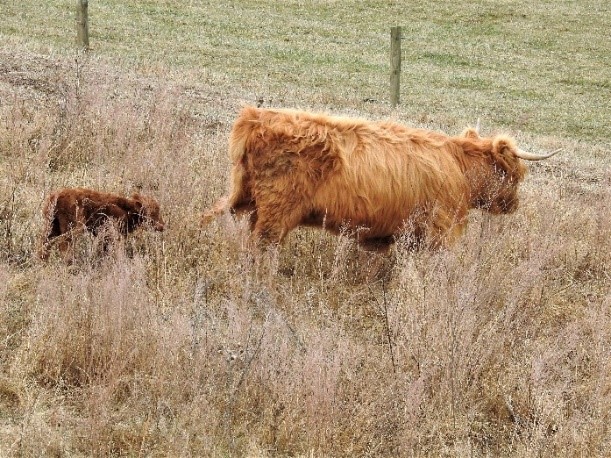
If it looks like the calf will need help finding the milk bar, we have a special stall to confine mama and help the baby learn where to get nourishment. Bottle babies are not as healthy as babies raised by a cow. We have not had to bottle feed any of ours yet, but that is just pure good fortune. We’ve had two calves that needed a surrogate mother and one was found in time to get the cow and calf to bond.
Preparing for New Life at Elm Hollow!
After the heat of summer, it is a challenge to get all the cows cleaned up and ready for calving. The girls have been creating mud holes to stand in during the heat of the day. They control their body heat through their horns and hooves, so mud feels good. During that cooling time, they get mud up to their bellies and we try to clean up tummies, udders, and tails before the babies arrive.
If you were aware of Liberty and Loretta’s sale, the buyer was evidently just a scammer. Once the sale was over, he did not respond to any of my attempts to contact him. So, Liberty and Loretta have been chilling out here and auditing the halter class. Clearly they are only cooperating because of the snacks the participants get for good behavior.
Southeast Highland Show and Sale
Don’t miss this big event in Gray, TN, at the Appalachian Fairgrounds.
October 20 and 21, 2023.
Here is the link for more information: https://www.sehighlands.com/
The Virtual Highland Cattle Show 2023
Each year, the Highland Cattle Breeders Group (International) holds a virtual Highland cattle show. The cattle are judged by a well known Highland Cattle Judge who ranks the first four places in each class. After that judging is completed, but before winners are announced, the voting is open to the membership.
If you are interested in participating, join the FB group: Highland Cattle Breeders Group (International) and then visit https://www.virtualcattleshow.com/ to see the entries from around the globe. Winners will be announced in mid to late October.
Here are photos of a few of the Elm Hollow submissions from this year. We’d appreciate your support in the people’s choice. This is a fun competition, not a cutthroat must-win show. Just enjoy seeing the beautiful coos.
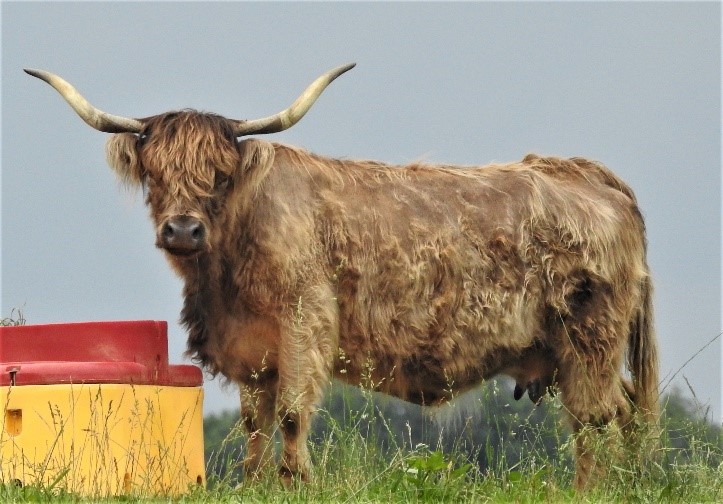
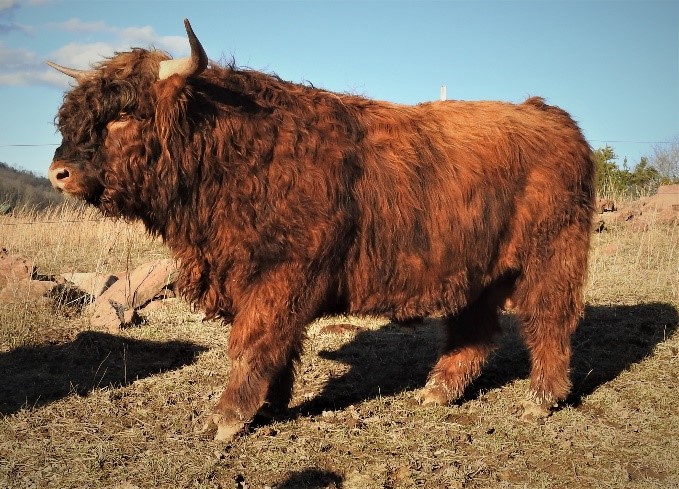

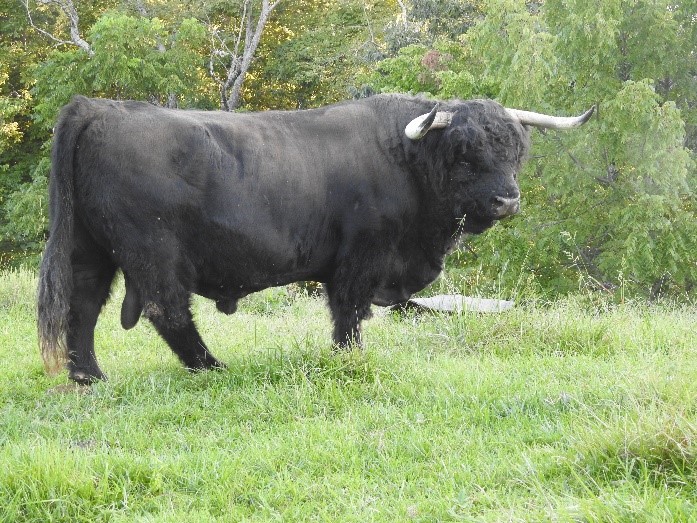
The last one is an entry I submitted for Magic’s new owner because his transition is taking place so near the deadline for entry. We plan to enter a few more, but have not taken the photos yet.
This is off topic, but I bring it up because I don’t want anyone to think I’m ignoring questions. I hate the META platform. It is extremely difficult for me to use. I managed to communicate with the old Facebook, but now they have too many rules.
Because of the all the fouls and the bickering comments that are posted it has become impossible to communicate in comments. My preferred means of communication is email because I can use a keyboard instead of trying to do one letter at a time on my phone, which often fills in words that make no sense. If you want to be sure and get a response, please use my email: [email protected]
Are You Thinking About Buying a Cow or Calf From Us?
When I’m asked about the availability of calves or cows, I respond with dozens of questions because it is important that I know a bit about your farm. Where are you located? If you are nearby, you might want to schedule a farm tour to meet the calves!
- Do you have other cattle so a calf would have an age-appropriate companion? Highlands are herd animals and must have a companion. A steer is the perfect companion for a heifer, bull, or another steer. Without a companion, a calf will be frightened and may not behave the way you expect.
- Do you have a facility where you and your veterinarian can safely work on a coo when that is needed (and it will be needed)? Facilities vary in complexity and price. An effective squeeze need not be extremely expensive.
- Do you have a large-animal vet in your area?
- What is your pasture like? Is shade and fresh water readily available?
- What will be the purpose of Highlands for you? Breeding, beefing, pasture ornament/pet?
I need all this information to be sure that the calf and the buyer are well matched. Although I ask about your experience with cattle, I understand the learning curve. When we bought our first Highland, neither of us had ever owned a cow! We chose Highlands after reading about their hardiness and docile temperament. My thinking was that they are hardy enough to survive our inexperience and docile enough that we will survive if we do something wrong. Highlands are truly a wonderful breed for a beginner in the bovine world.
